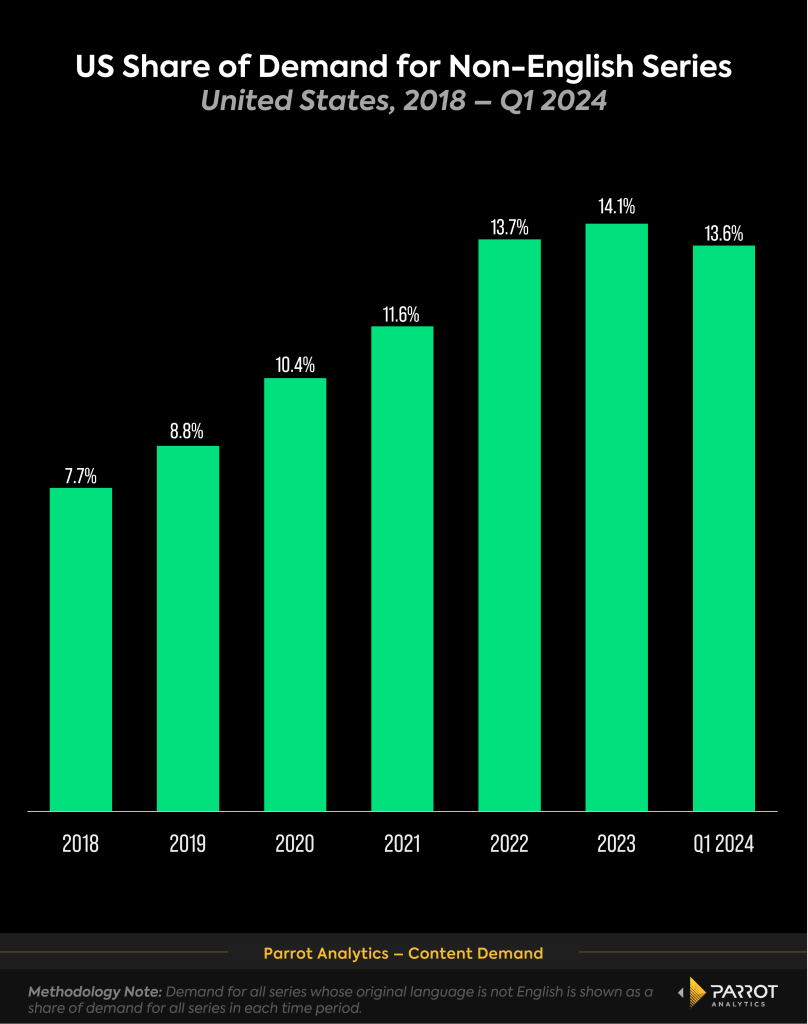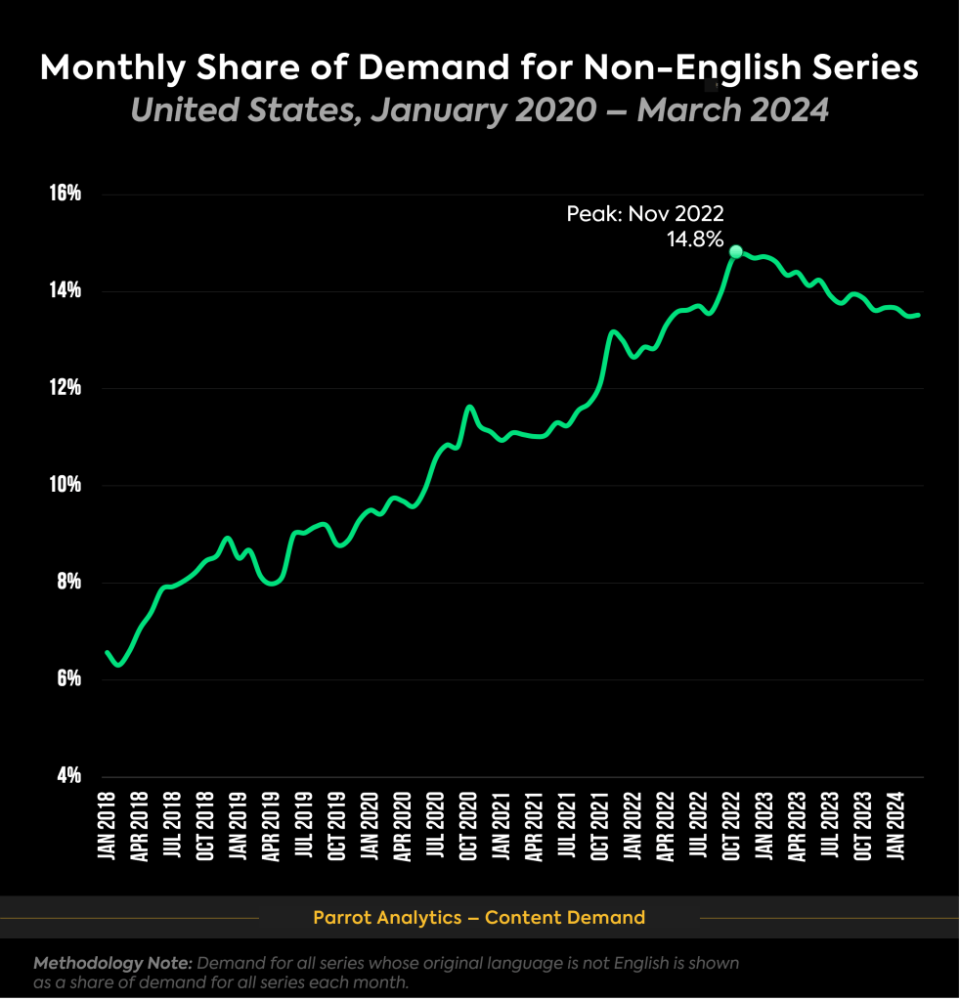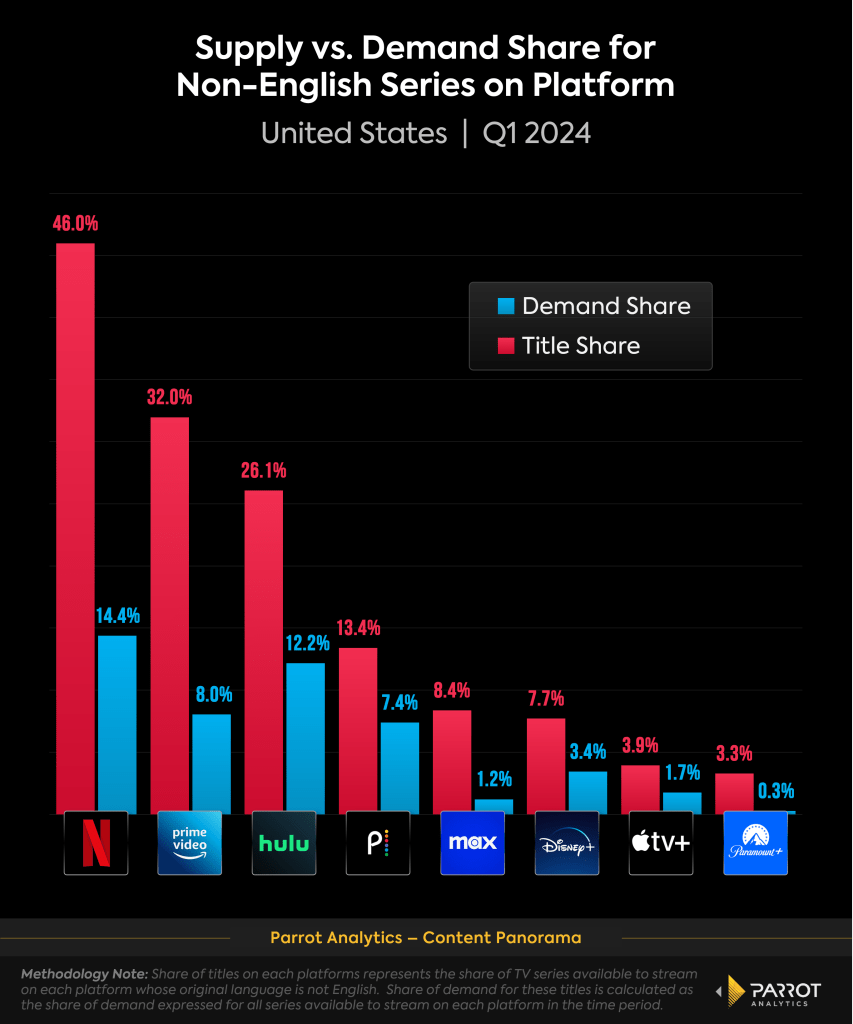Has America’s Demand for Foreign Language Content Cooled? | Charts
The globalization of content consumption is well known. We have seen this particularly in the US where the share of audience demand for non-English content has ballooned over the past several years. However, in the first quarter of this year, there has been a reversal of these long-term trends.
In Q1 2024 the share of audience demand in the US for foreign language shows was 13.6%, which is smaller than the share of demand for non-English shows in the past two years. There has been a similar drop in demand for foreign language films as well. Has this long-term growth trend finally hit a ceiling?

If we dig into the data at a more granular level we can see that the U.S. share of demand for foreign language series actually peaked in November 2022 and declined steadily throughout 2023. This suggests that the shrinking share of attention for foreign language content is not merely a blip but a longer-term reversal that has been underway for some time.
There have been several events that helped drive American openness to foreign language content over the past few years – “Parasite” being the first foreign language film to win Best Picture at the Academy Awards in 2020, the breakout success of “La Casa de Papel,” the record-breaking premiere of “Squid Game” and the rush of K-dramas that followed it. In the absence of catalysts like these, American audiences appear to have drifted back toward more English-language content.

Using Parrot Analytics’ Content Panorama, we can see how major platforms in the US stack up in terms of the amount of foreign language content available to stream. Platforms like Amazon and Netflix have benefitted from the increasing openness of American audiences to international content. As these streamers made more original local content for markets around the world, a domestic market more receptive to international content meant they could use these international titles to keep American audiences engaged as well. If US audiences have maxed out the amount of attention they are willing to give foreign language content, the ability of these platforms to leverage their international content at home may be tested.
Hulu has been notably successful with its selection of foreign-language content. Just over a quarter of series available to stream on Hulu are non-English. Even though a smaller share of Hulu’s catalog is dedicated to foreign-language content compared to Amazon Prime Video, these series drive a larger share of demand on Hulu than Prime Video (12.2% vs. 8.0%).
Of course, as a US specific platform, Hulu is making programming decisions with American audiences in mind. The bets it has made on international content have been broken through with US audiences, in particular its focus on building a hub for animated content with Japanese anime.

The post Has America’s Demand for Foreign Language Content Cooled? | Charts appeared first on TheWrap.


